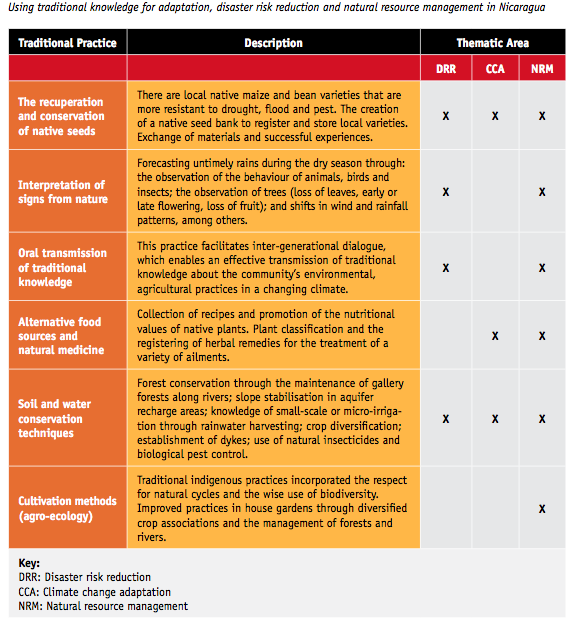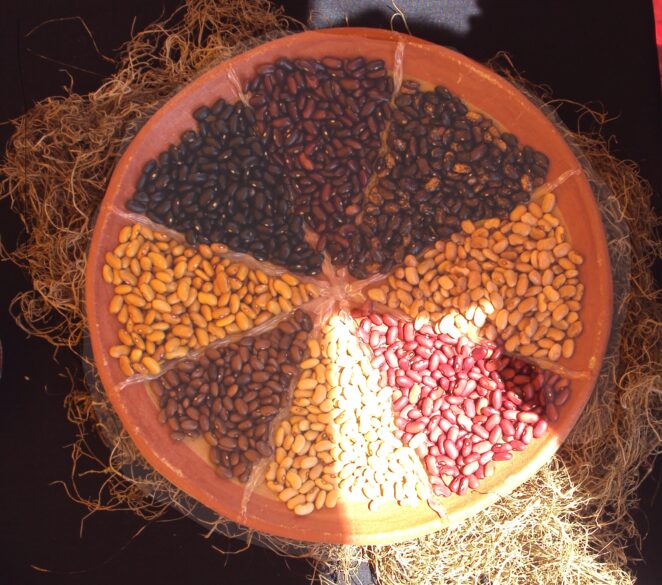Case-study /
Using traditional knowledge for adaptation, disaster risk reduction and natural resource management in Nicaragua

The geographic location and landscape of Nicaragua makes it highly vulnerable to disasters such as hurricanes, floods, landslides, earthquakes, wildfires, droughts, tsunamis and volcanic eruptions. Ecosystems are under great pressure from deforestation, soil erosion, sedimentation and contamination from human activity.Partners for Resilience is a global consortium project, with member organisations including CARE, the Red Cross Climate Centre, Cordaid, and Wetlands International. The consortium as a whole seeks to integrate climate change adaptation (CCA) practice with both disaster risk reduction (DRR) and the sustainable management of ecosystems through natural resource management (NRM) approaches.
Disaster risk reduction strategies to reduce the impact of hazards on vulnerable households
In Nicaragua, the Partners for Resilience (PfR) project integrates traditional knowledge on biodiversity and local DRR practices to improve the adaptive capacity and resilience of communities during cyclical periods of drought and flooding. The table below outlines the traditional practices and processes that have proved extremely useful in engaging communities around livelihoods, risk management, restoration of the natural ecosystem and building adaptive capacity in the face of climate change.

Using traditional knowledge for adaptation, disaster risk reduction and natural resource management in Nicaragua
Promotion of climate-resilient livelihoods strategies
For 18 years, the community of Río Arriba Inali has run one of the most successful seed banks in Nicaragua. Over time, they have managed to select and conserve the varieties of crop best adapted to the local conditions and most resilient to a changing climate (due to shorter growing cycles, greater resistance in spite of lower overall yields). As a way of building on this local knowledge, the PfR team in CARE Nicaragua helped create a local farmer field school where this sort of information could be shared and developed. At the farmer field school, tests were carried out on the yields of different bean varieties (native versus commercial). The native varieties were found to be better adapted to climate variability and poor soils, and required fewer inputs such as fertilisers and pesticides.

Local varieties of bean, northern Nicaragua. © Zenia Nuñez / flickr.com / creative commons
Capacity development for local civil society and government institutions
The PfR project is partnering with government representatives to develop a climate adaptation strategy for the region. PfR also works in schools and universities, teaching young people about environmental and climate-related risks and what they can do to reduce them.
The upstream and downstream communities of El Castillito and Moropoto in Nicaragua tried game playing as a fun and effective way to promote learning about climate change adaptation, disaster risk reduction and sound ecosystem management. With their neighbours, friends and PfR partners, community members played a game in which players representing upstream and downstream communities made decisions about growing crops, protecting assets and feeding their families – all while managing the risk (represented by dice) of floods and drought. The dialogue that followed the game was rich with observations about the players’ risk-management strategies and the decisions they make in the complex context of real life.
Advocacy and social mobilisation to address the underlying causes of vulnerability
The region of northern Nicaragua, where the project has been working, is characterised by a dry tropical climate and marked by unsustainable land use practices, such as livestock production on steep slopes, planting crops ill-adapted to soil conditions and poor water source management. By combining traditional knowledge with sound land management techniques, the Partners for Resilience Project has been successful in reversing the process of land degradation through community-led social mobilisation and conservation activities, and the building of local coalitions to address the underlying drivers of climate risks.
